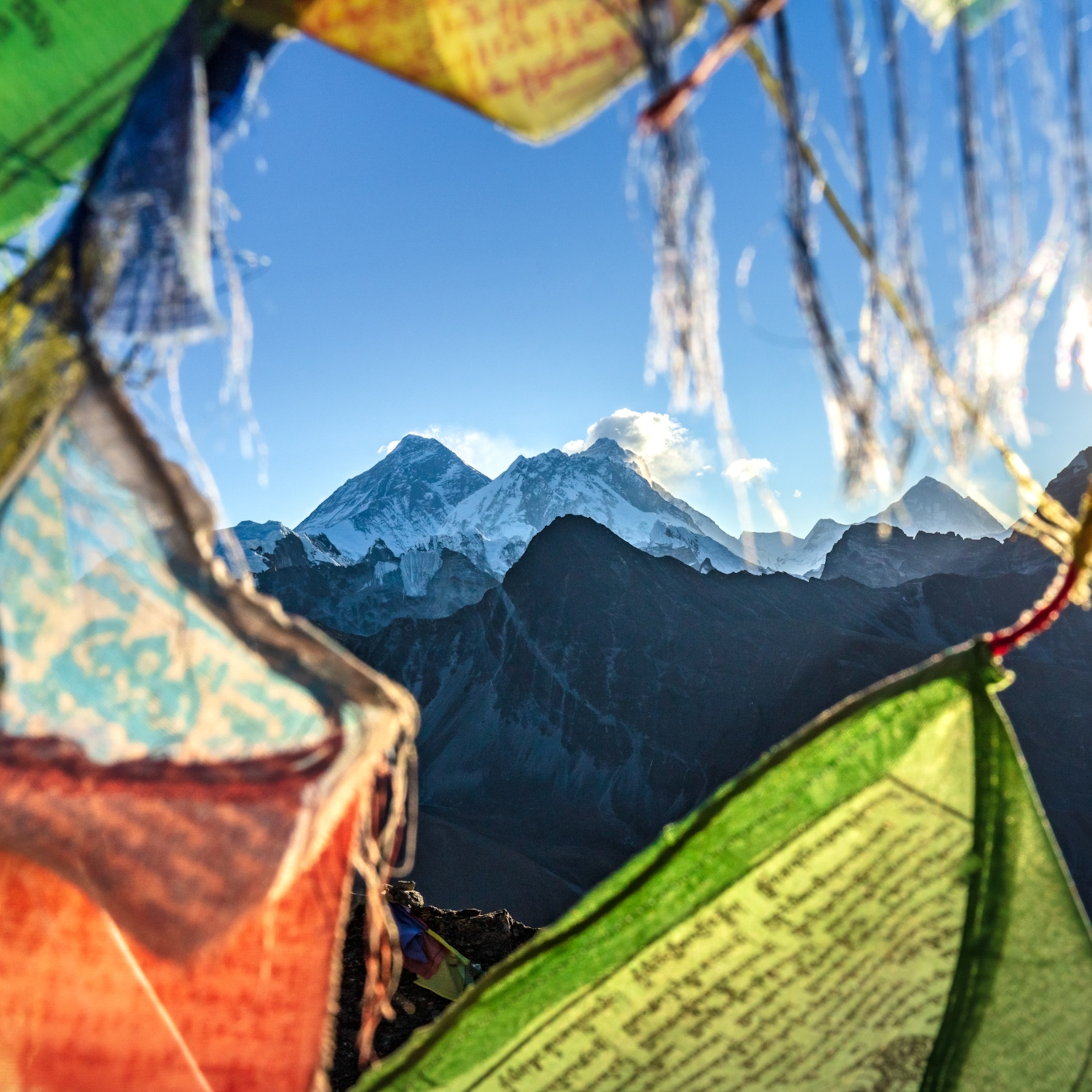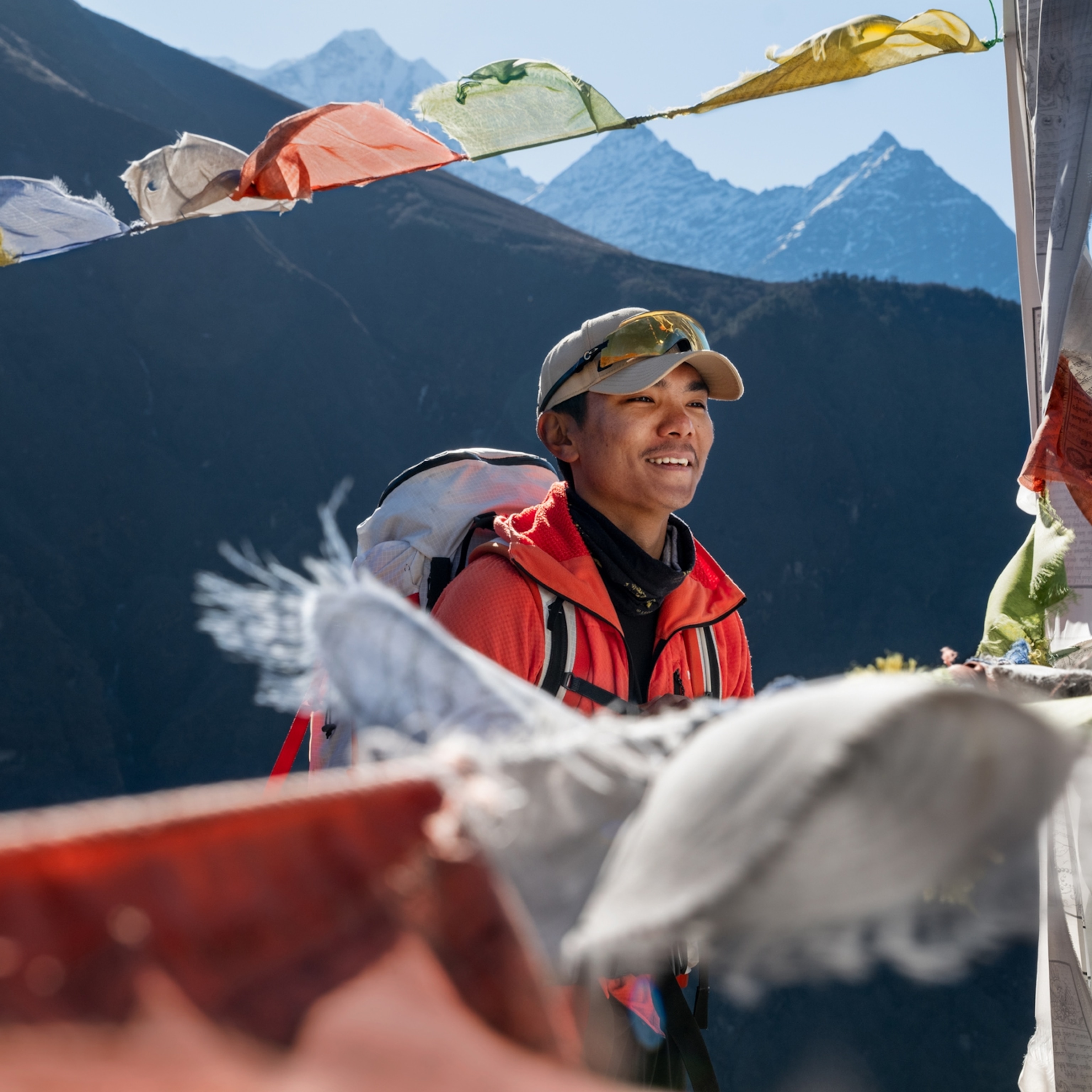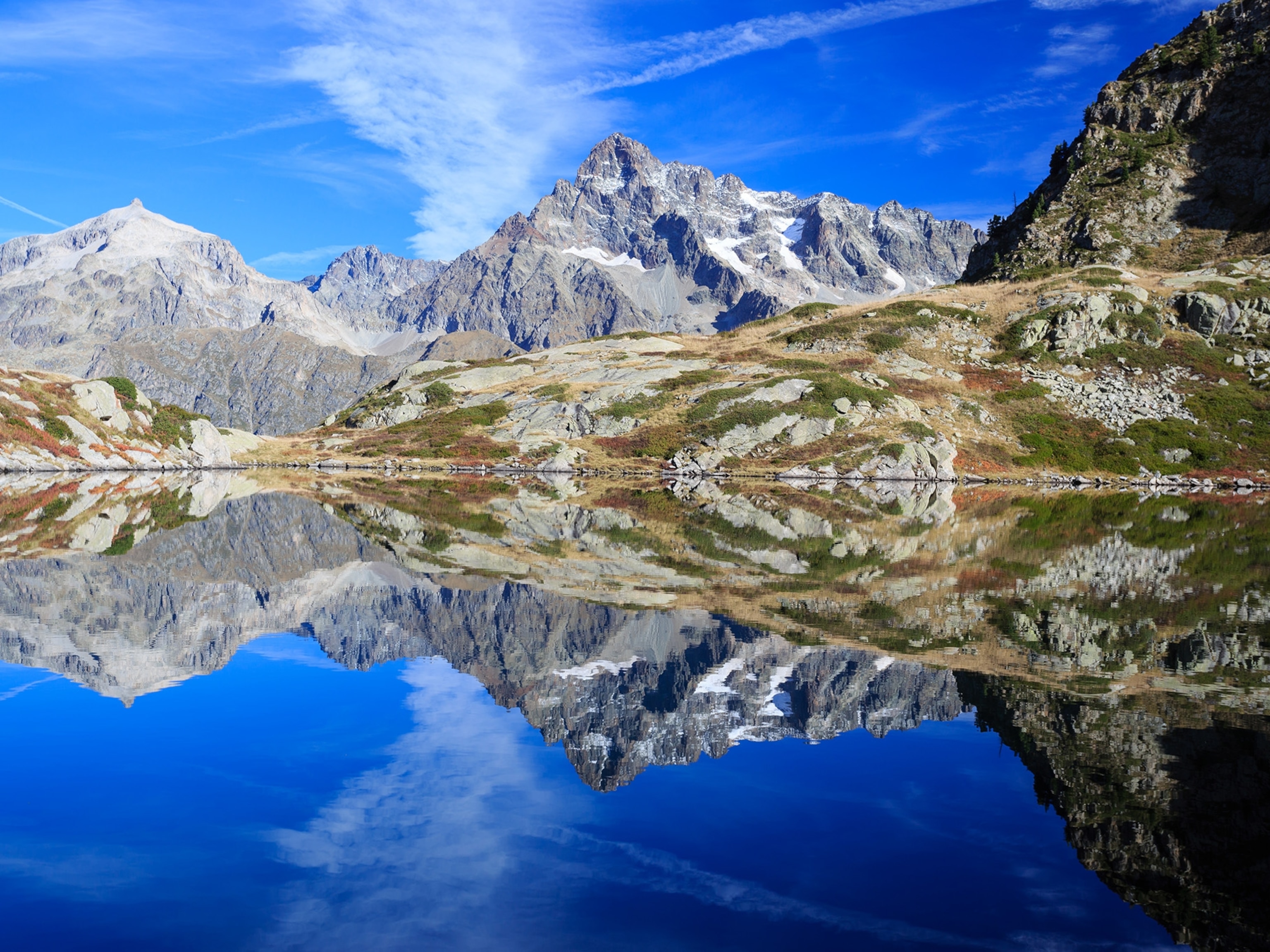
Read an Everest Guide's Diary of Chaos Amid Quake, Avalanche
An American mountain guide tapped his account of the avalanche and ensuing rescue into his smartphone.
American mountaineer Mike Hamill was caught on Mount Everest when a earthquake-fueled avalanche destroyed much of Base Camp on Saturday. Over the next 48 hours, as he worked with other survivors to aid the wounded, the American mountain climbing guide kept a running journal of his experiences on his smartphone. Here is what he wrote.
1 p.m., April 25: An hour after earthquake and avalanche
This place is foreign to me. The traditional landmarks that give you a sense of where you are in camp missing. A Norwegian flag, trekking company Jagged Globe’s blue and white banner, and the trail we have traversed to “crampon point” are all gone, covered in rock and ice debris. A dense fog settles over camp, and it begins to snow fat flakes.
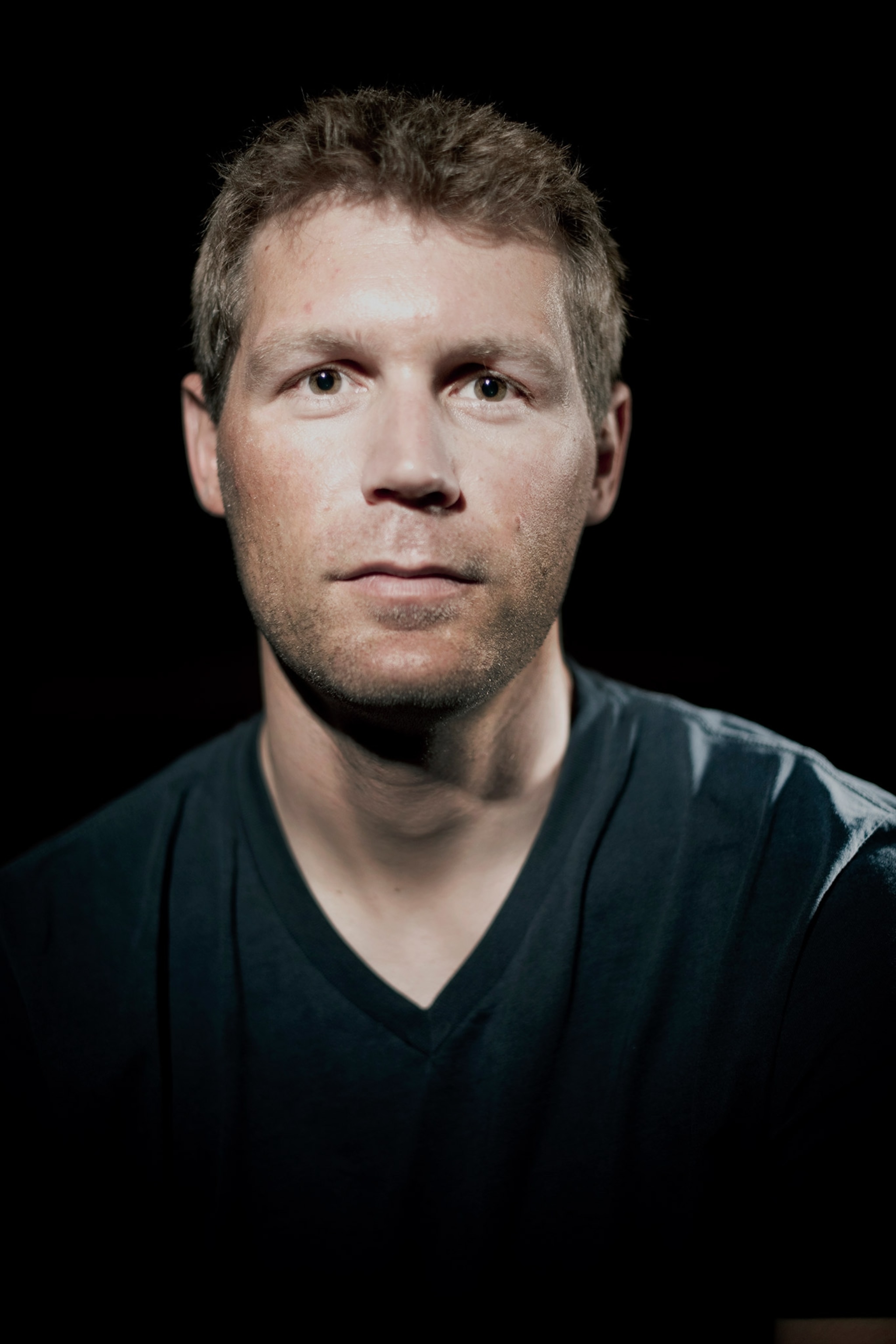
An hour earlier we were enveloped by a black cloud; a roiling mass of snow, air, and rock that shook our tents and blanketed our camp with an inch of white. I clambered inside a storage tent with Phu Nuru and pressed against the strong metal poles to keep it erect. It was terrifying. Like a hurricane. There was no escaping, and we didn’t know if we would come out the other side.
The glacier beneath our feet shook violently, swaying, popping, and we heard a torment of rock and ice barrel down the flanks of the largest mountains on earth. Once it passed, we breathed a sigh of relief, took stock of our climbing team on the mountain. For a brief moment we thought we had won. Those of us that have been through situations like this before knew better. Ang Jangbu and I make our way into Base Camp proper with a team of Sherpas, surveying the scene.
It is one year and one week after 16 Sherpa were killed in the Khumbu Icefall, one of the largest disasters in mountaineering history. That disaster was a once in a lifetime event; how could this happen twice in two years? It’s two and a half years after 12 climbers were killed on nearby Manaslu, another 8,000-meter peak. Last fall 70 trekkers perished while trekking in Nepal in a late monsoon storm from the Bay of Bengal that dumped feet of snow, shortly before three people died while climbing on Ama Dablam. I know tragedy; I was involved in all of these incidents, but I have never witnessed devastation on this scale.
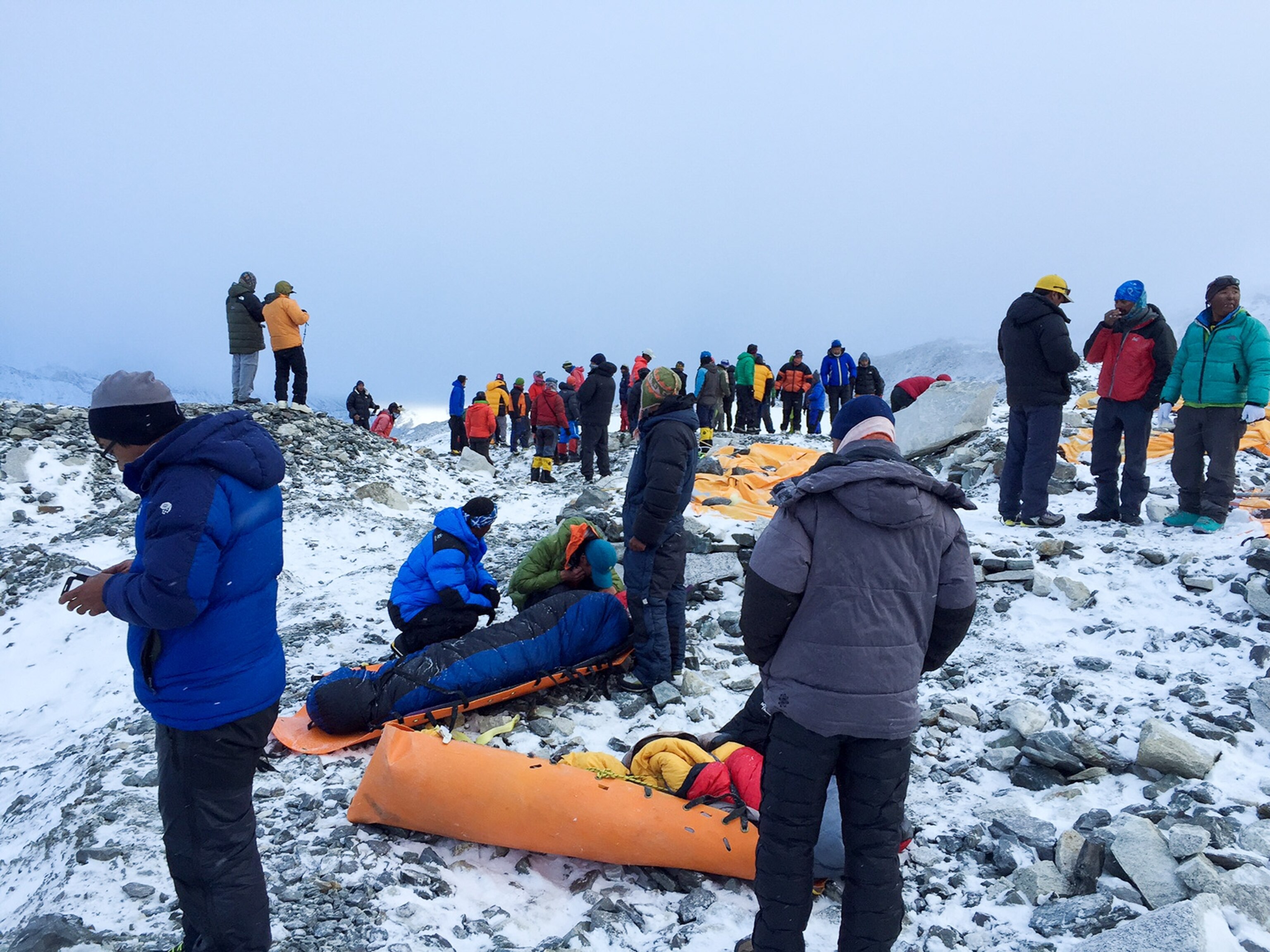
No more than 200 meters up the glacier from our camp, the devastation was complete. Everything is destroyed. No tents remain erect. They are shredded, poles broken, climbing gear and cooking supplies scattered across the frozen landscape. Some Sherpa walk hastily gathering gear while others form groups where wounded lay.
This place is supposed to be safe. Most consider entering the Khumbu Icefall, above Base Camp, as climbing into the danger zone. Although avalanches running off surrounding peaks become white noise because of their frequency, in the middle of the expansive U shaped Khumbu Valley, we feel safe, buffered by lateral moraines and ice ridges a half a mile wide.
When I felt the ground sway and shake, the first thing I thought of was the safety of our climbers at Camps 1 and 2 above. I narrowly missed being pummeled by an ice avalanche there in 2005, and know the risks of the Western Cwm (the narrow glacier valley above the Khumbu Icefall). It’s hard to believe that our preconceptions about safety and risk can be so completely false.
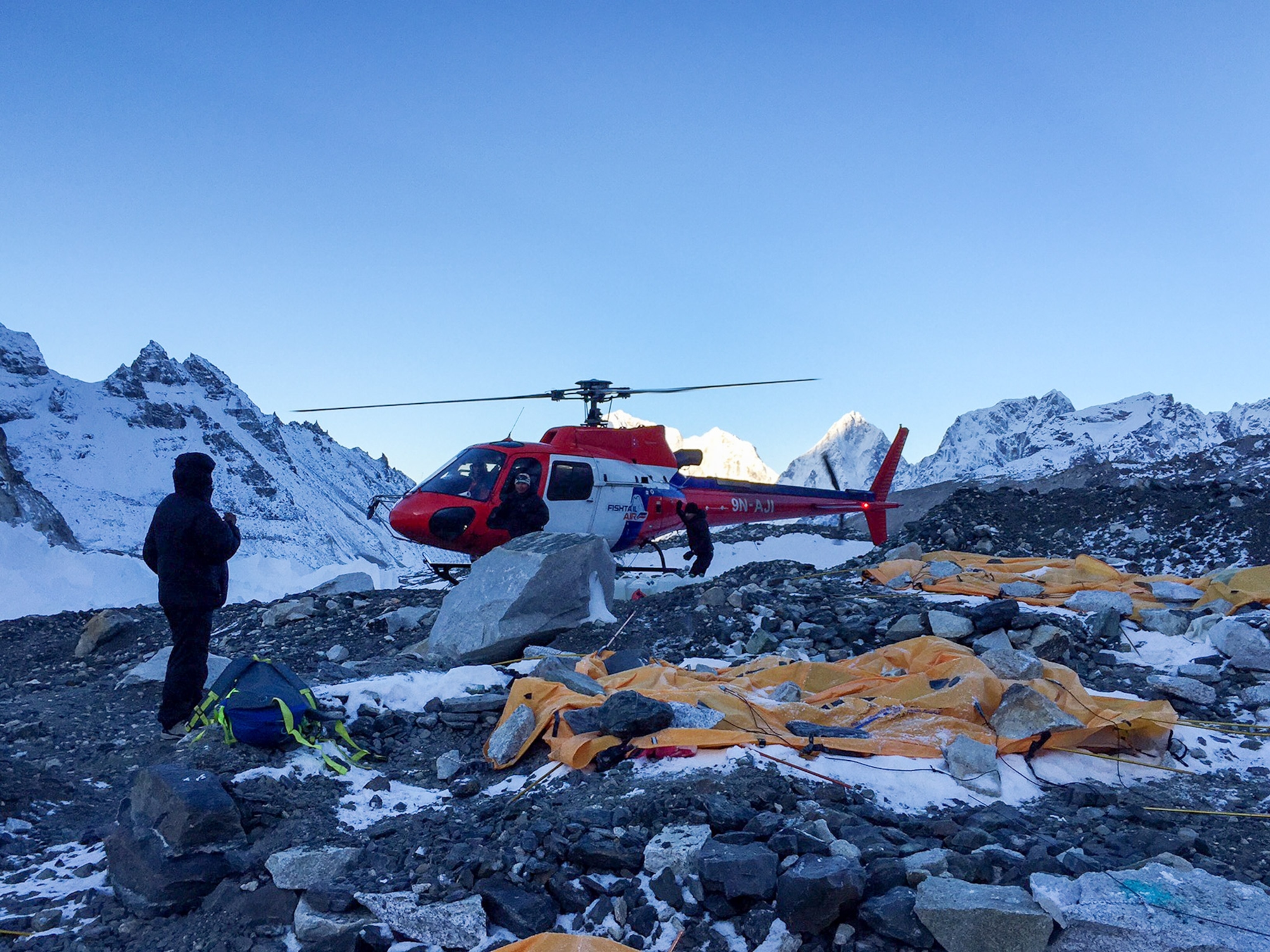
Ang Jangbu and I roam Base Camp doing triage, helping victims, trying to save lives. There were too many to count and too many to save. Some were deceased when we arrived, while life was leaving others. We focused our efforts on those who stood a chance at survival.
I happened across a Sherpa covered in a sleeping bag and blood, sitting Indian-style rocking back and forth. His left eye was swollen shut and his coherence fleeting due to obvious head trauma. We fashion a litter from a broken ladder that was damaged in the blast, and tie him to it with shards of rope strewn on the ground. Other Sherpa ran to help transport him to treatment.
5 p.m., April 25: Five hours after earthquake and avalanche
Eventually I stumbled upon the Everest ER, the volunteer medical clinic servicing the Base Camp community. Their tents were torn and the lead doctor is noticeably limping. I know her from Antarctica and ask what happened. “Oh, I was hit by a rock and think I chipped my patella,” she says.
All around us, doctors from all over the world, as well as less trained wilderness EMT and WFR’s (Wildlife First Responders) are frantically trying to save lives. Ten patients were laid in front of Everest ER in various states of coherence. Sherpa wrapped the dead in torn bright yellow tent fabric and set them aside. Two friends and fellow guides work tirelessly to stabilize the broken pelvis of a Japanese man whom they have never met. This scene continued for hours.
There were too many to count and too many to save. Some were deceased when we arrived, while life was leaving others. We focused our efforts on those who stood a chance at survival.
The radio crackles. Greg, my expedition leader, has become the incident scene commander. Greg has proven himself to be a calm, effective leader. By virtue of us having the largest intact camp, they’ve decided to move medical operations to our cluster of wall tents. Patients are painstakingly transported the quarter mile over glacier ice, rock, and slick snow from Everest ER to our camp. I take the lead transporting a Japanese man with two broken legs.
Within an hour our dining and “hang out” tents are transformed. With Greg’s leadership and the doctor’s expertise, I suddenly have hope. Over 35 patients are being treated by almost 10 doctors and hosts of volunteers. The main dining tent is now the critical care ward; the small dining tent becomes the stable patient clinic, another is a home for the walking wounded. Nearby, Asian Trekking’s camp holds the overflow, while Himex houses uninjured who lost their camps.
The organization is impressive. Every efficiency is saving lives.
7 a.m., April 26: 19 hours after earthquake and avalanche
The red and white AS350 B3 “Astar” helicopter launches, flown by a Swiss pilot. It drifts east then spins south towards Pheriche. It gains speed. This is the fourth of fifteen critical evacuation flights to the Pheriche medical clinic for the day. The hope is to get them to Kathmandu before the clouds shut down flying. There are three patients per flight: two non-ambulatory people on litters, and one of walking wounded. The deceased will have to wait until tomorrow.
Today we are lucky. The forecast called for clouds and light precipitation, but skies cleared around 6 am and have remained so, long enough for us to transport the patients to better care. If we couldn’t fly today, more would surely die in the rarified air of Base Camp.
A makeshift helipad has been hacked from glacial ice and becomes the center of activity. The whole world seems to be watching. A doctor records each patient’s name and expedition name as we prep them for transport. Forty-five of the worst-off patients need to be transported. Heavy clouds fill the valley below, but a tunnel beneath them allows the brave pilots to keep flying. The upper reaches of Pumori to the west, and towering Nuptse to the east are visible, but for how long? Long enough to save these lives?
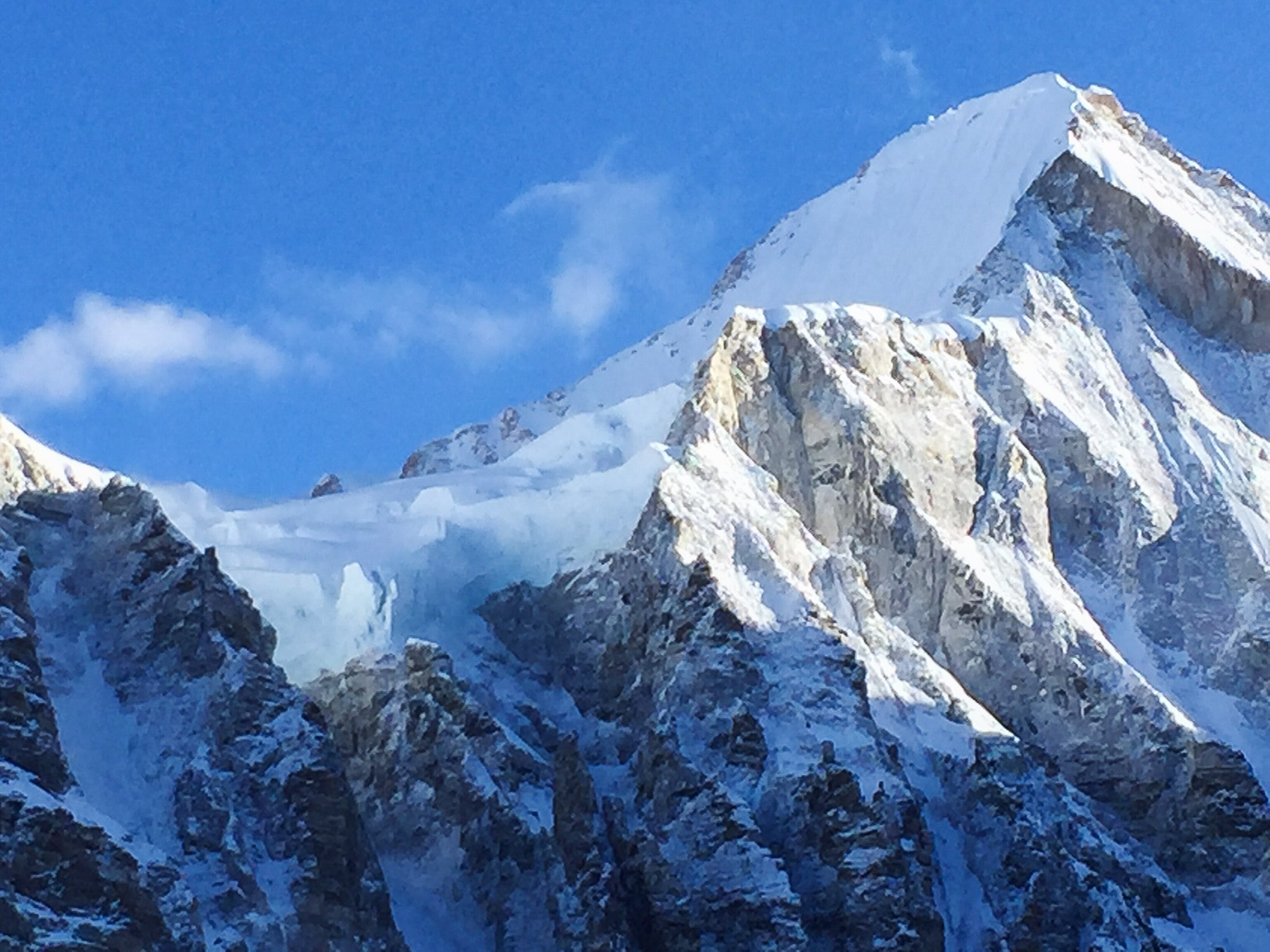
A Sherpa cook eventually brings a pot of juice as exhausted rescuers take a seat on a rock wall adjacent to the helipad. We’ve done it. Twenty-five hours to the minutes after the Earthquake struck, over 50 patients have been cared for and transported down valley in one massive effort by the entire Everest community.
An hour later we get our first aftershock, a magnitude 6.9, and more debris plummets towards camp.
Mike Hamill is an American guide with International Mountain Guides, and the author of Climbing the Seven Summits: A Comprehensive Guide to the Continent’s Highest Peaks. This account was edited for length and clarity.
